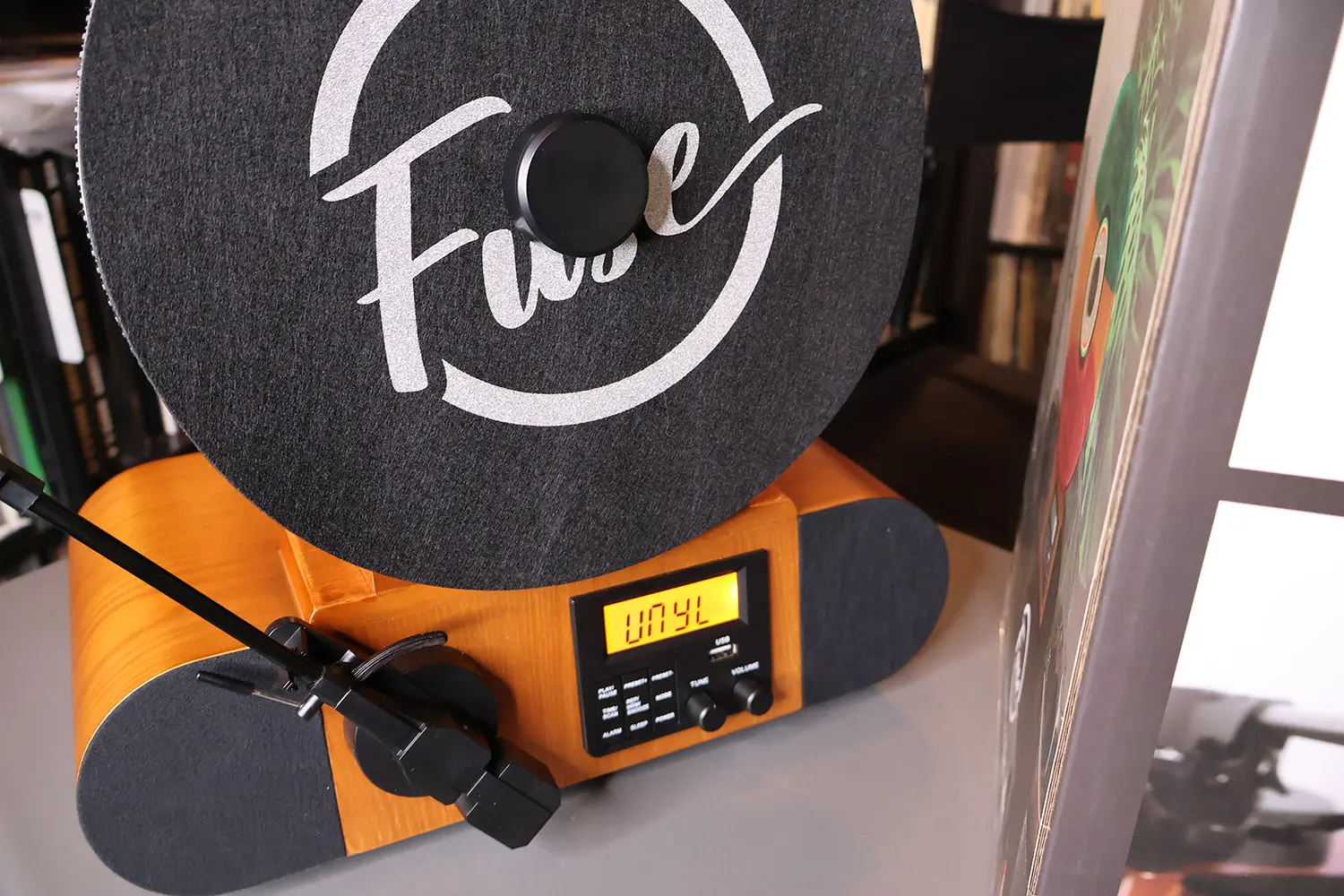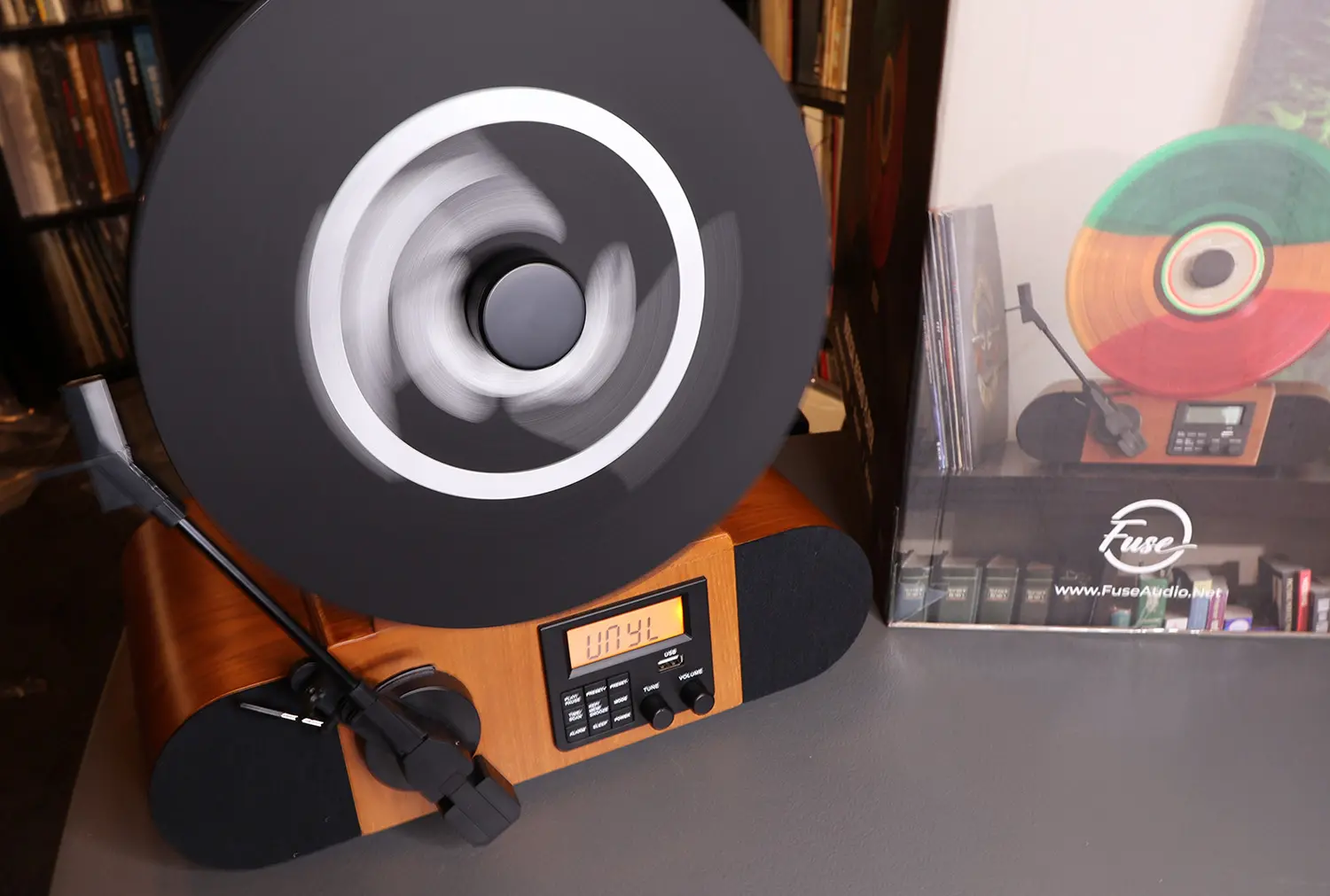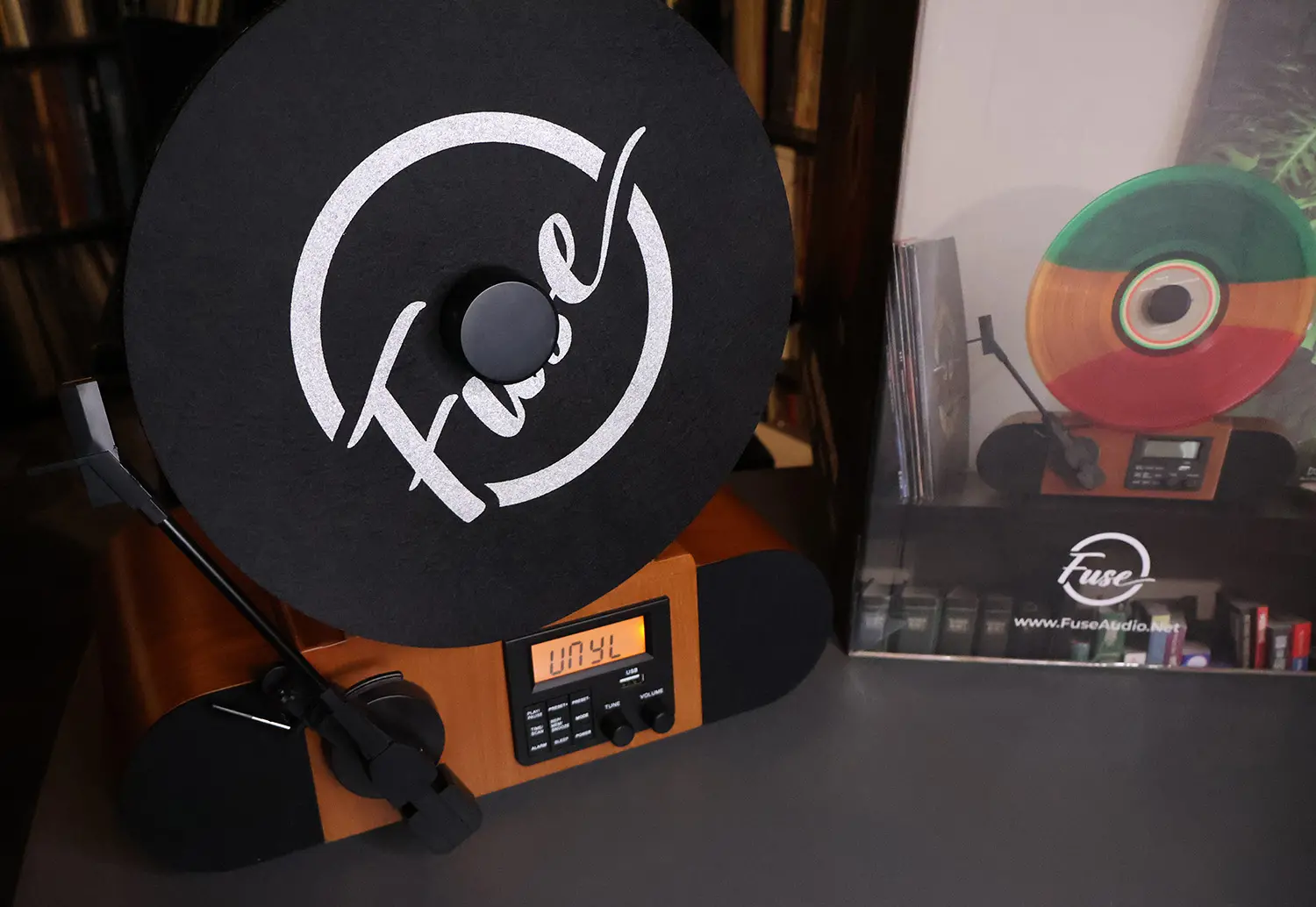
In a musical world where streaming is king, it’s the ritual of vinyl playback that draws many people in. With the larger canvas for artwork, the tactile sensation of holding the record, and the satisfaction of a stylus hitting the run-in groove and leading towards the opening track, for many this adds another physical level to the appreciation of the ephemeral nature of audio playback.
The Fuse Vert literally almost literally sticks vinyl playback on its head, lifting the platter to a near 90-degree angle that’s orthogonal to the conventional flat platter. The result looks to be both aesthetically interesting and a quirky addition to the joys of vinyl playback. Is this mere gimmick, or is the table worth taking for a spin? Read on to find out!
Specifications of the Fuse Vert Vertical Turntable
- Three speeds – 33rpm, 45rpm, 78rpm
- Built in ported speakers
- FM Radio
- Bluetooth 4.1 streaming
- Alarm clock
- USB playback
- Upgraded cartridge – Audio Technica AT3600L (tracking at 4g)
- Hardwood mid-century style finish (Ashtree veneer around MDF)
Unboxing the Fuse Vert Vertical Turntable
Out of the box the Fuse Vert Turntable emerges well-padded with Styrofoam and ready to play records in minutes. The white AT3600L cartridge came preinstalled (the black tonearm indicates this the the “premium” version of the Fuse Vert), and by simply plugging in the wall adapter, powering on and selecting the vinyl mode you’re good to go. Out the back are ports for mini-jack input and RCA output, ideal if you wish to use this as a table with a built-in phono preamp. Volume control of the output is fixed, meaning if you turn the dial down on the Vert you can still have full loudness on your external setup, with the opposite of course true when you want the speaker of this model to do the speaking.

Functions of the Fuse Vert Vertical Turntable
With its easy-to-read amber screen the model works as a handsome tableside radio, allowing you to quickly set the various functions thanks to the easy to understand buttons on the front of the unit. You can set alarms for the unit to wake up on a particular mode, set Auxiliary input for a wired device like a CD-player or the like, hit USB to playback from a stick of files you may have kicking around, or, of course, selecting vinyl to do the main trick of the model.
Playing vinyl on the Fuse Vert Vertical Turntable
A dial on the back allows you to select 33/45/78 rpm, a cool trick if you happen to have any shellac albums from the early 20th century as part of your collection. For the most part, of course, you’ll be running with the dominant 33/45 that’s been the norm since the mid-1950s, and being able to switch quickly is a boon in contrast to more premium models that may require you to adjust a belt when switching between speeds.
The player isn’t exactly vertical as its name implies – the platter rests on a slight angle away from the front, allowing you to much more easily get a record onto the spindle. There’s always a chance that it will slide off, but with practice you can get it on pretty much everytime without it dropping off.
When the record is secured (or you hold with one hand), there’s a spring mounted clamp that lightly affixes to the spindle. When fully attached the record stays in place quite well, and it’s only when changing sides that one needs to be a bit cautious.

The sound of the Fuse Vert Vertical Turntable
The built-in speakers on the Fuse Vert are rear ported which helps a bit to provide some bass to the front-facing drivers. Stereo separation is decent, and while this is hardly the stuff of audiophile dreams, it does serve its purpose to provide room-filling sound from a variety of media. Even at full blast the speakers never suffered from rattling or too much distortion, and at regular listening levels it does an adequate job playing back your favourite tunes.
It should be remembered that particularly for older music these modern systems, even modest ones like this one, are far superior to the early period transitor single speaker models that most had a half century ago. When listening back, especially to songs mixed for that era, you’ll find that songs really do work out of such a small package. I threw in some mono records from the 1950s and 60s, a mix of jazz, folk and rock, and found those the most satisfying listening of all on the unit.
Modern, bass heavy productions do sound a bit thin and muffled, but even then you at least got the sound of the grooves, and given so many buy these records as collectables rather than for sound playback, for the casual listener this player will be a revelation.
Finally, on an aesthetic level, coloured pressing and picture discs really shine, and while the sound quality, particularly of the latter is severely lacking on any system, here the difference between a normal pressing and the picture variant is smoothed out. There’s something quite cathartic about watching your favourite picture disc spin round and round in a vertical orientation that’s far superior to the traditional horizontal platters, and this may in fact be the best use case for this model.

Final thoughts on the Fuse Vert Vertical Turntable
As a beginner turntable, a conversation piece, a display model for your favourite picture disc or coloured variant, the Fuse Vert Vertical Turntable provides a whimsical, space-saving solution for playing back records. With its built-in speakers it gives you everything you need to play the tunes, and thanks to its audio outputs you’re even able to eventually upgrade the sound as you build your record library. Thanks to additional features including Bluetooth support, clock settings and the like, this is a table that’s a great starting point for those starting out on their vinyl journey, or even those after many years returning to the pleasant ritual of spinning discs.





